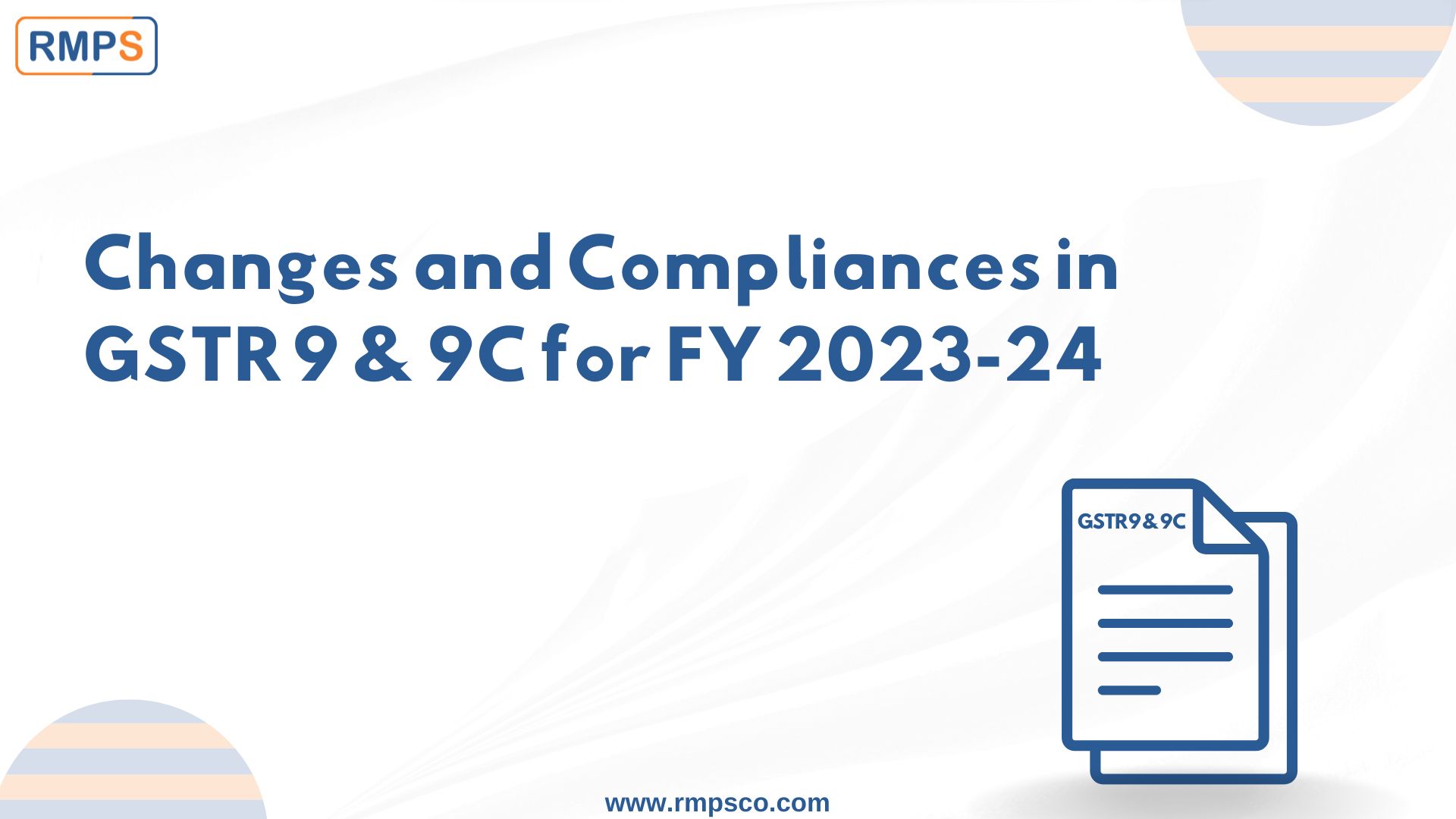
Introduction
The evolving landscape of GST regulations, combined with departmental audits, has significantly impacted the process of filing annual returns. This article provides a comprehensive overview of the changes in Form GSTR 9 and GSTR 9C for FY 2023-24, along with reconciliations, best practices, and solutions to advanced issues.
Key Dates
- Due Date: December 31, 2024
- Extension Expected? Not anticipated this year.
Reconciliations to Perform
Essential Reconciliations:
- Turnover:
- Match audited financial statements/books with Table 5A (across all GSTINs).
- Table 5N vs Table 17:
- New mandatory Table 17 serves as an internal check mechanism.
- Outward Taxes:
- Compare liability per books with GSTR 3B and DRC-03 (if applicable).
- Ensure rate-wise reconciliation aligns with books.
- GSTR 1 vs GSTR 3B:
- Simplify GSTR 9 updates by reconciling early.
- Inward Taxes:
- Compare credit claimed in books with GSTR 3B.
- Identify excess or missed ITC claims; rectify by November 30, 2024.
- Closing Balances:
- Reconcile cash and credit balances across books and GST portal.
- Spillover Transactions:
- Track prior-year transactions for proper allocation in the current or future year.
Pro Tip:
Perform invoice-level reconciliations to:
- Streamline filing processes.
- Preemptively address departmental queries.
Updates in Form GSTR 9
New Additions:
- Table 4G1:
- Disclose supplies where e-commerce operators are liable under Section 9(5).
- Source data from GSTR 1 (Table 15) and GSTR 3B (Table 3.1.1.i).
- Table 5C1:
- Report supplies taxed by e-commerce operators under Section 9(5).
- Source data from GSTR 1 (Table 14b) and GSTR 3B (Table 3.1.1.ii).
- Table 8A:
- Reflect ITC as per Table 3(I) of GSTR 2B, replacing GSTR 2A for better alignment with Section 16(2)(aa).
Carry-Forward Relaxations:
- Table 4:
- Separate amendments, credit notes, and debit notes.
- Table 5:
- Consolidate exempted and nil-rated supplies.
- Table 6:
- Input/Capital goods bifurcation optional; consolidate values.
- Table 17:
- HSN disclosures mandatory at 4- or 6-digit levels based on turnover.
Outward Supply Adjustments:
- Disclose prior-year supplies reported in current FY under Table 10/11, not Table 4/5.
- Impact reflected in Table 9 for reconciliation.
Updates in Form GSTR 9C
Key Changes:
- Table 5B:
- Include unbilled revenue at the start of the year.
- Turnover Reconciliations (Table 5C-5N):
- Separate disclosures required; no merging under Table 5O.
- Table 12B & 12C:
- ITC details now mandatory.
- Table 14:
- Expense-wise ITC disclosures remain optional.
Note:
- Ensure all GSTR 1 and GSTR 3B filings are completed for FY 2023-24 before submitting GSTR 9/9C.
- GSTR 9 and 9C cannot be revised once filed.
Advanced Issues & Solutions
- Credit Notes:
- Disclose credit notes raised in the current FY but related to prior years in the applicable period.
- Deferred ITC:
- Report eligible but unclaimed ITC in Table 13 of GSTR 9.
- Negative ITC:
- Address negative ITC in Table 7H and Table 9 to ensure reconciliation.
- Table 8C vs Table 13:
- Differentiate ITC for imports/inward supplies (Table 13) from goods in transit (Table 8C).
Best Practices & Tips
- Maintain detailed workings with linked data to avoid manual errors.
- Perform invoice-level reconciliations for ITC disclosures.
- Provide an Annual GST Management Report summarizing:
- Filed returns (GSTR 1, 3B, 9, 9C).
- Reconciliations and identified variances.
- Suggestions for internal process improvements.
Conclusion
Filing Forms GSTR 9 and GSTR 9C for FY 2023-24 has become more intricate due to recent changes. Accurate and timely data capture, along with expert guidance, can minimize errors and ensure compliance. Implementing best practices today will mitigate potential disputes and enhance efficiency in GST reporting.
LinkedIn Link : RMPS Profile
This article is only a knowledge-sharing initiative and is based on the Relevant Provisions as applicable and as per the information existing at the time of the preparation. In no event, RMPS & Co. or the Author or any other persons be liable for any direct and indirect result from this Article or any inadvertent omission of the provisions, update, etc if any.
Published on: December 11, 2024
